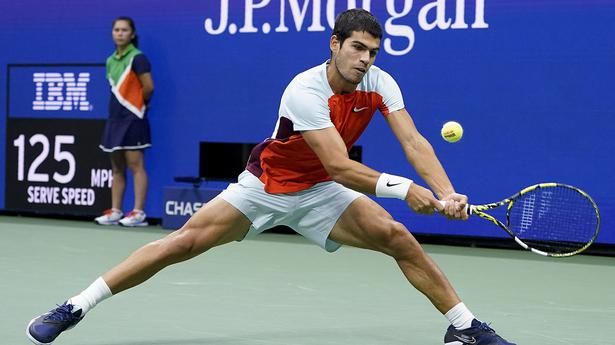On the day he won the Grand Slam, Carlos Alcaraz also became the No.1 player in the world, the youngest-ever male to reach this position
On the day he won the Grand Slam, Carlos Alcaraz also became the No.1 player in the world, the youngest-ever male to reach this position
Carlos Alcaraz, the 19-year-old Spaniard, became the first male teenager to win a Grand Slam in 16 years, after fellow countryman Rafael Nadal achieved this feat in 2006. On the same day he won the Grand Slam, Alcaraz also became the No.1 player in the world, the youngest-ever male to reach this position. For about two decades now, men’s tennis has been dominated by a triumvirate— Roger Federer, Rafael Nadal and Novak Djokovic. Since 2003, the Big 3 have won 80% of all Grand Slams. However, in recent years, they have been competing in increasingly fewer games because of various reasons such as injuries, age and vaccine mandates. Other Slam champions — Dominic Thiem and Daniil Medvedev — have not been able to convert their starts into streaks. With the old guard slowly disappearing and new stars failing to shine, young Carlos is set for a long run.
A young star is born
The chart shows the age of male Grand Slam champions in the Open Era. The sign (+) indicates a breakthrough win (when a player wins their first Major), which has become a rarity in the last two decades.
Charts appear incomplete? Click to remove AMP mode
Numero Uno
At the end of the U.S. Open on Sunday, Carlos became the No.1 tennis player at 19 years 4 months and 6 days, the youngest to achieve this feat (according to AFP).
Waning legends
The graph shows the number of matches played by Nadal (blue), Federer (turquoise), Djokovic (red) and Alcaraz (yellow) each year. While the pandemic had an impact on the number of matches played, the Big 3 have been playing fewer games even otherwise.
Recent stars
The table shows the Grand Slam results of two recent champions other than the Big 3. After winning the titles, Thiem and Medvedev have not converted them into a streak. R-Round; QF-Quarter-finals; SF-Semi-finals; F-Finals; W-Tournament wins.
The story only considers the date on which tournaments started and not when they ended
Source: Tennis abstract
Also read: Data | Age no bar for the Big Three in men’s tennis as their dominance continues




